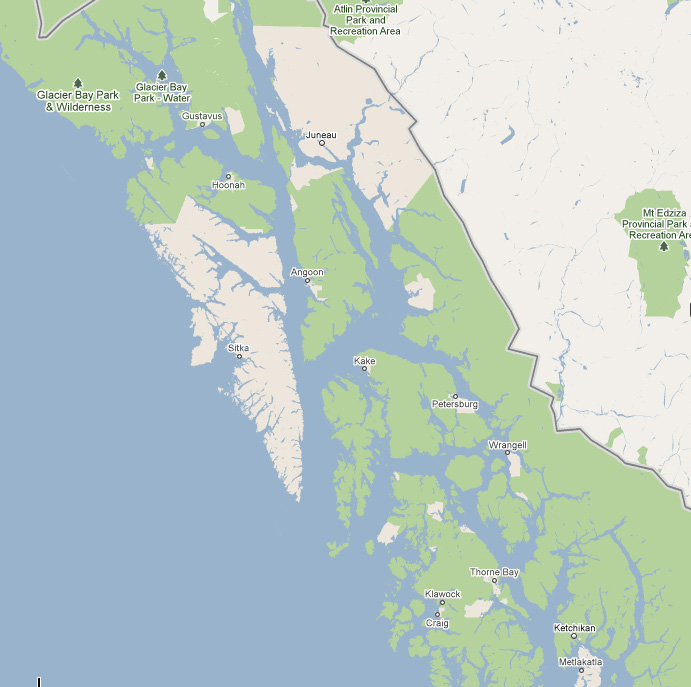

| This travelogue is one family's experience in the inland passage in Alaska. To see a photo in a larger size, just click on it. | |
| There's no way to take a cruise to Alaska and not mention the ship itself -- the Holland America Oosterdam, which in my mind was distinguished by the beautiful art and sculptures on the boat. Along with being a floating 5-star hotel, the Oosterdam is also a floating museum of marine-themed art worth millions of dollars. This shot of the Oosterdam was taken in Sitka. |

|
| The Oosterdam is a gorgeous ship. The restaurant's lounges, pool, spa, and the casino are just spectacular. To see the details, go to Holland America's website on the Oosterdam, which has an excellent video tour of all these areas. Holland America also has an iPod audiobook that can be downloaded for free from iTunes. The audiobook takes you on a tour of the ship's art, which I took while on the ship. This webpage is a selection of art from the tour, but before starting it, here's another shot of the Oosterdam taken on the dock in Victoria, B.C., which was our last stop. |
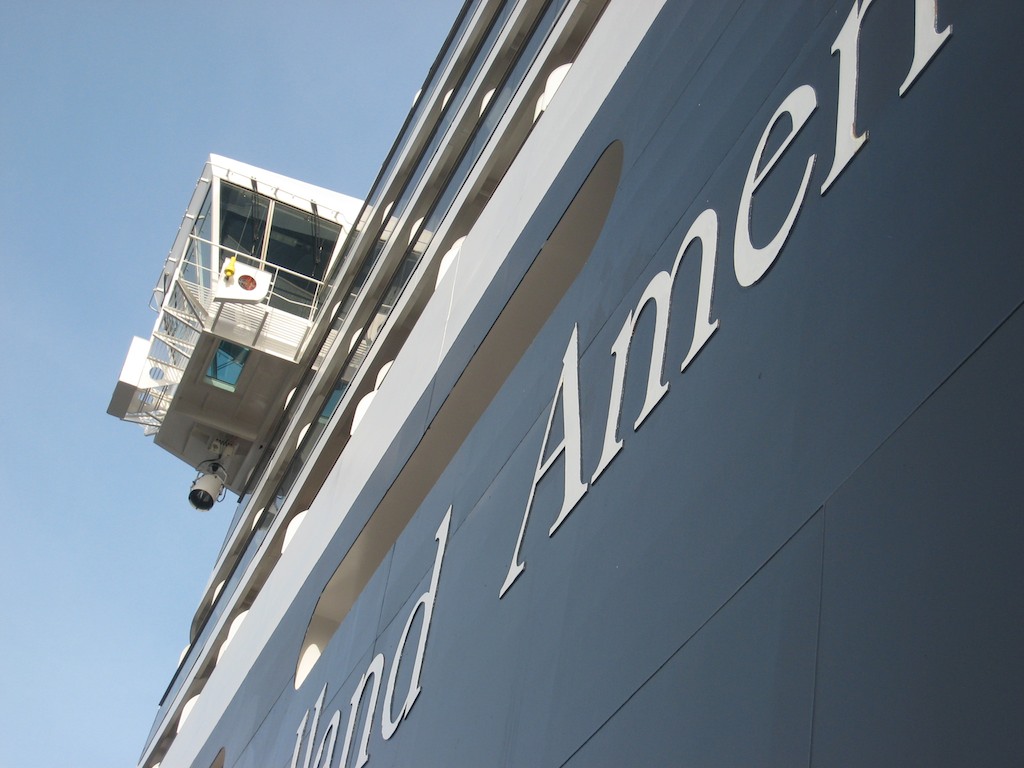
|
|
The highlight of the Oosterdam's art is this gorgeous crystal globe made by Waterford. The globe hangs at the top of a three story atrium in the center of the ship. It is the largest globe ever created by Waterford. Incidentally, the photos from this section are an example of what's possible using the latest generation of digital cameras, specially a Nikon D7000 with Nikon's 35mm 1.8 lens. All were shot on the ship in relatively low light without using flash or a tripod. By increasing the camera's ISO setting as required to as high as 6400, it was possible to get a proper exposure for every shot with a high enough shutter speed to hand-hold the camera. |
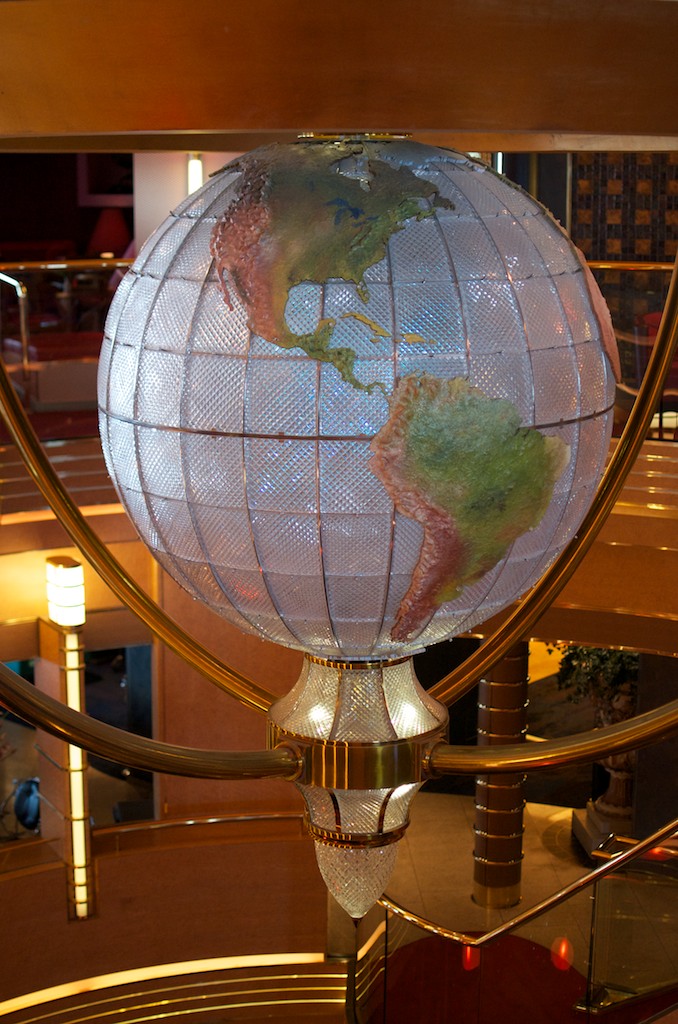
|
| This is a map of the Western Hemisphere created by cartographers in 1788. It hangs on the aft stairwell as you go from the Lido to the Observation deck on the ship. |
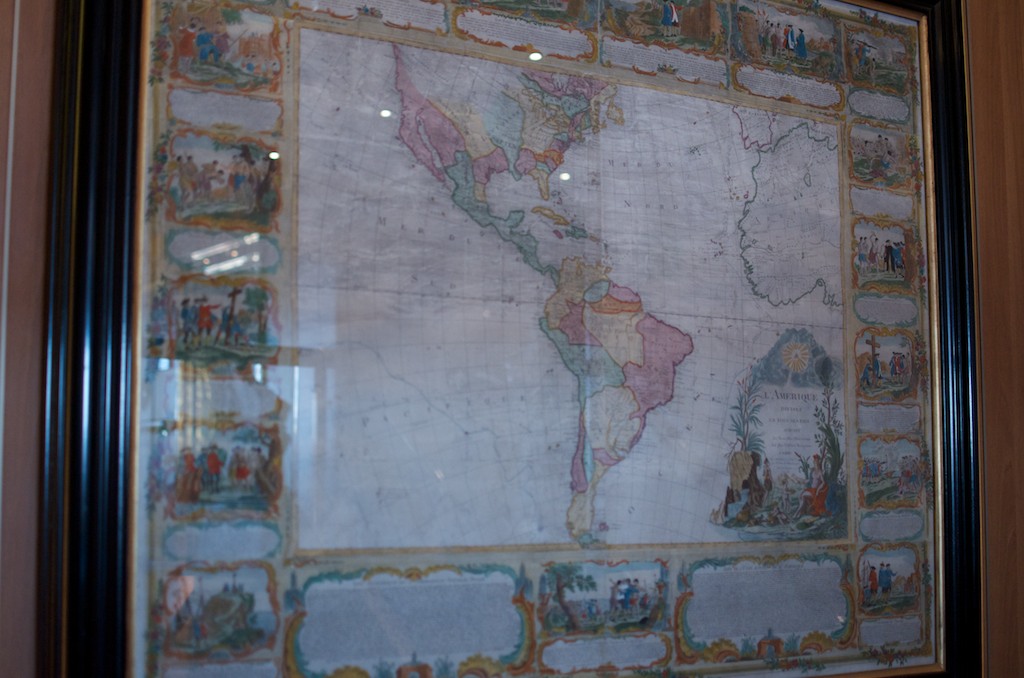
|
| This whimsical sculpture of a laughing sea nymph was created using a special material called eco-deco, which is a fireproof, biodegradable material that is far lighter than the stone, but looks like either stone or plaster. It hangs in the aft elevators on the Lido deck. |

|
| This bronze scupture of King penguins was made by British sculptor Susanna Holt. The penguins are on a floating base made to look like an iceberg, so that it can be positioned at various locations in the pool. Holt said that instead of working solely from photos of the penguins, she spent a lot of time at the San Diego Zoo studying the penguins in action. |

|
| This fish tile is one of several on the floor as you walk on the Lido deck. It's part of a sea motif on the boat. |

|
| This painting is by contemporary Dutch artist Milan Rubelli and is entitled Sea Mammals. It hangs at the entrance to the Lido restaurant that is at the aft end of the Lido deck. |

|
| This beautiful mural is entitled "Fruits and Flowers" by contemporary American artist Robert Kushner. It hangs in the Lido restaurant on the Lido deck. |

|
| This is a drawing by Frank Lloyd Wright of Fallingwater, the famous home that he designed for one of his clients, the Kaufmann family. Fallingwater was on the cover of a Time magazine issue in 1938. The drawing hangs in the Board room that is near the Lower Vista dining room on the Lower Prominade deck. |

|
| This is the center of a large portrait titled Maritime Relations. While it looks like a Dutch seascape, there's at least one palm tree in it, so it's likely set in Indonesia or another one of the Dutch ports from the 17th century. The painting hangs in the corridor outside the Explorer's Lounge, which was one of my favorite places on the ship. Each evening, a string quarter played there from 6 pm to 11 pm. |

|
| As you continue walking past the Exporer's Lounge on the Lower Prominade deck, this tile mural is on the floor. It was found in Turkey in the early 17th century. |

|
| This is a hardwood architectural facade from India from the 18th century. It hangs just past the Explorer's Lounge as you walk towards mid-ship on the Lower Prominade deck. |

|
| This is a portrait of Queen Beatrix of the Netherlands done by Andy Warhol. It hangs on the Main deck near the Information desk. It is one of a set of four done by the famed artist. The other three hang on the Oosterdam's Vista Class sister ships, all of which were named for the points of the compass: the Zuiderdam, Westerdam, and Noordam. |
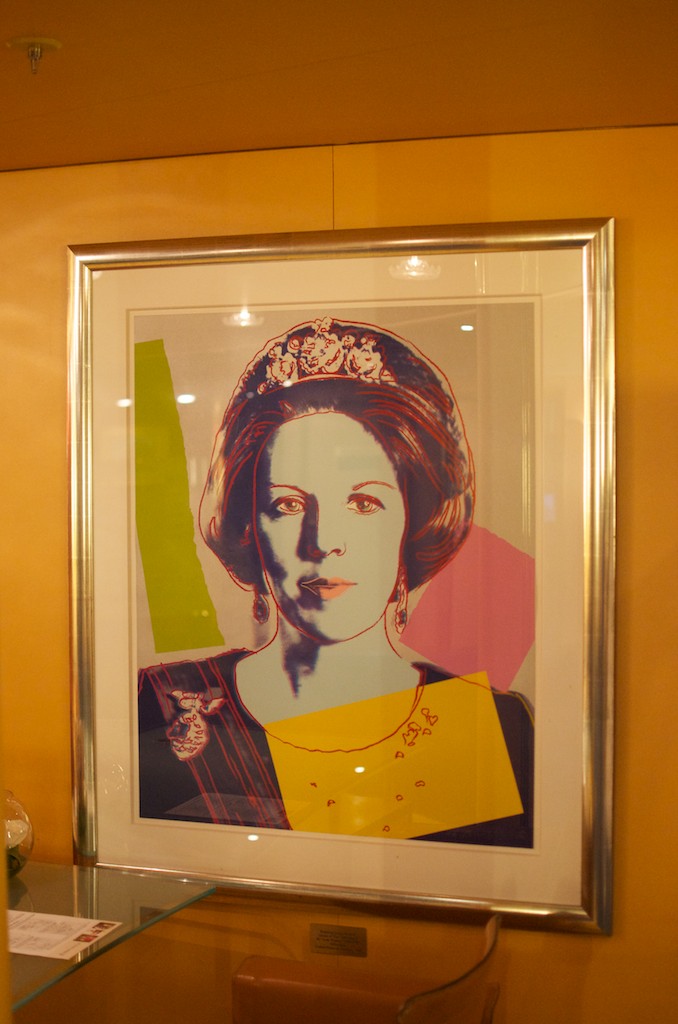
|
| This is a slice of the three-story atrium that is mid-ship on the Oosterdam. At the top (not pictured) is the beautiful Waterford crystal globe of the world. |
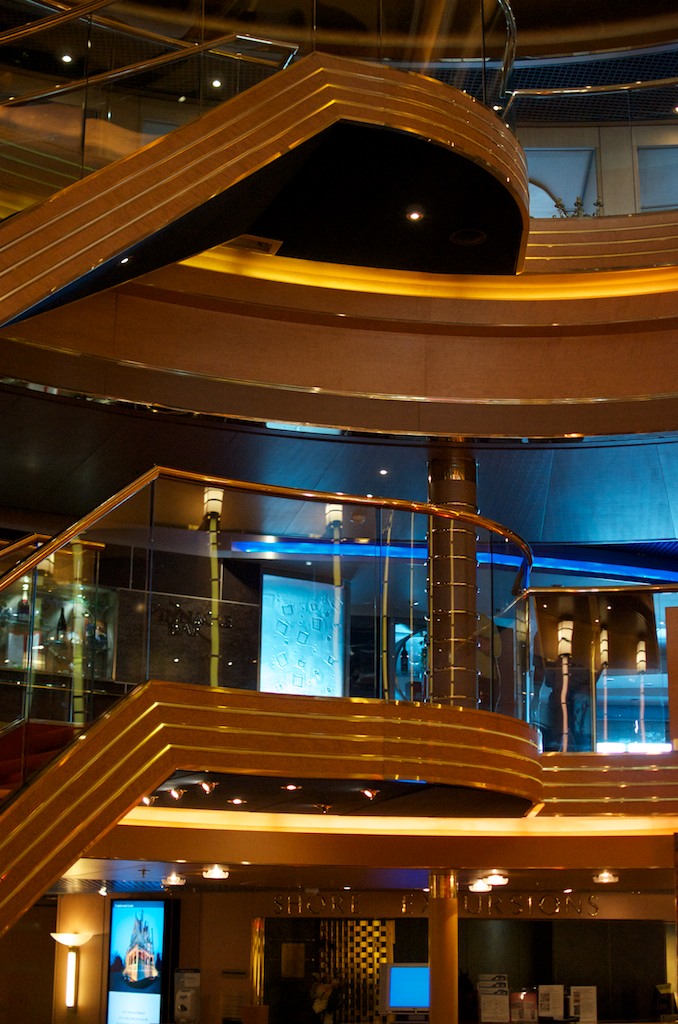
|
|
These photos of Laurel of Hardy are in a small corridor off the Queen's Lounge and Culinary Arts Center. They were made by photographer Jay Ward and released in 1964, and are one of a series of Ward's photos along the corrider. Given that most of the ship has maritime-related art, it is a most-interesting change of pace. Other photos in the sequence follow. |
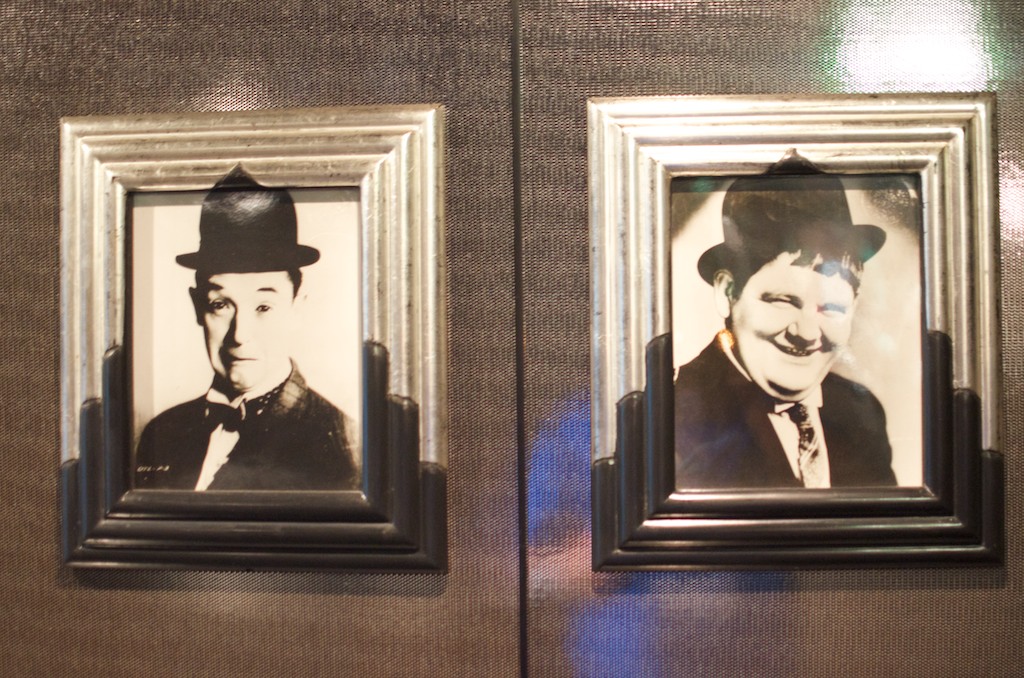
|

|
|
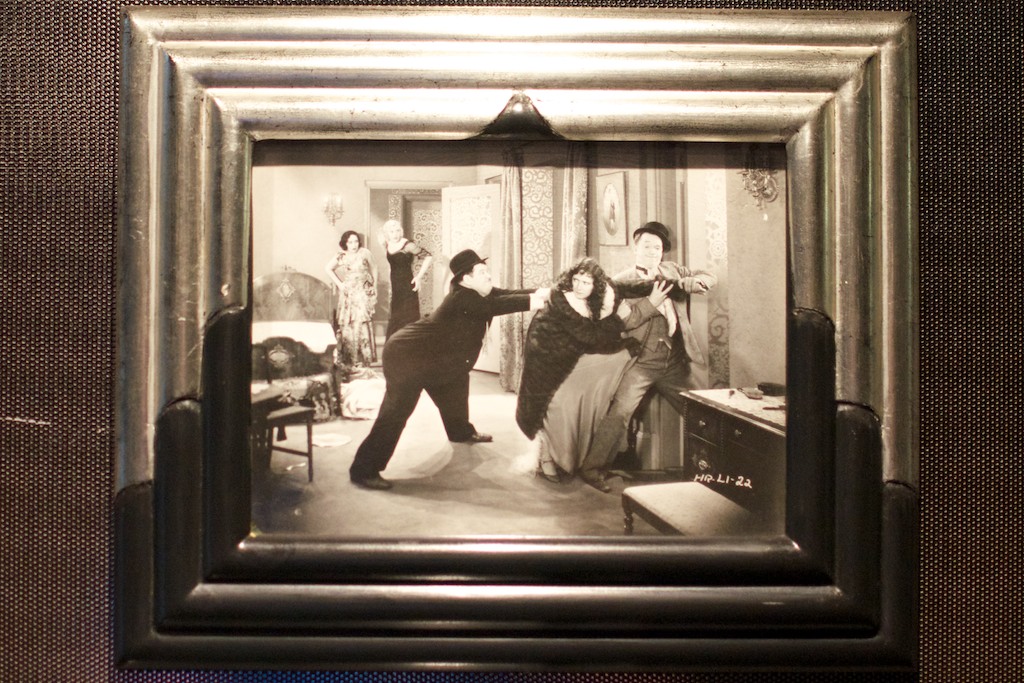
|
|
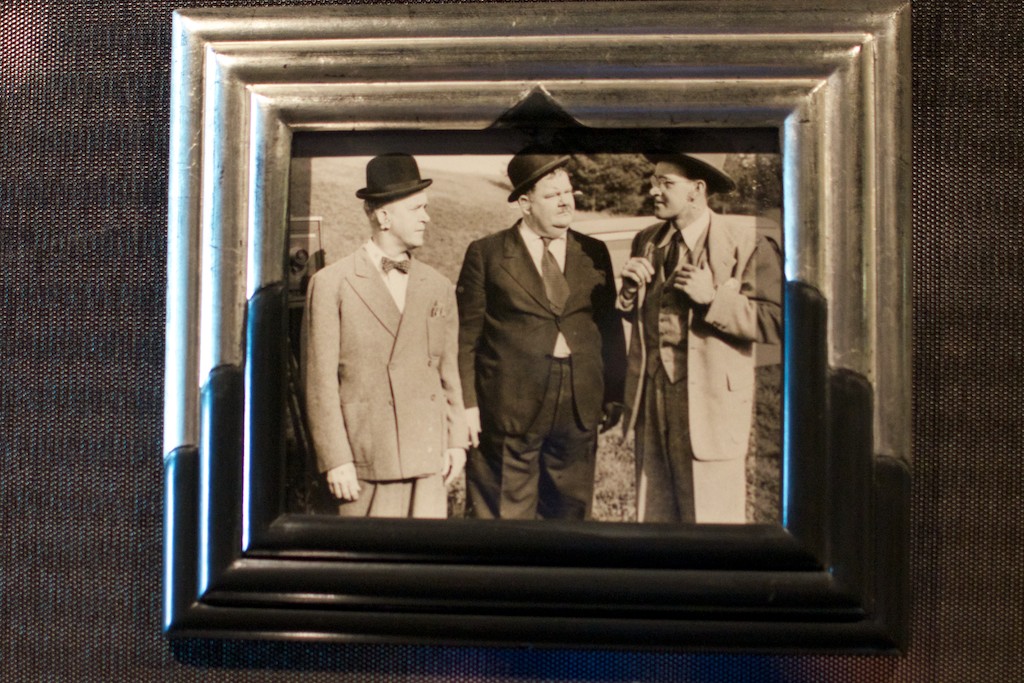
|
|
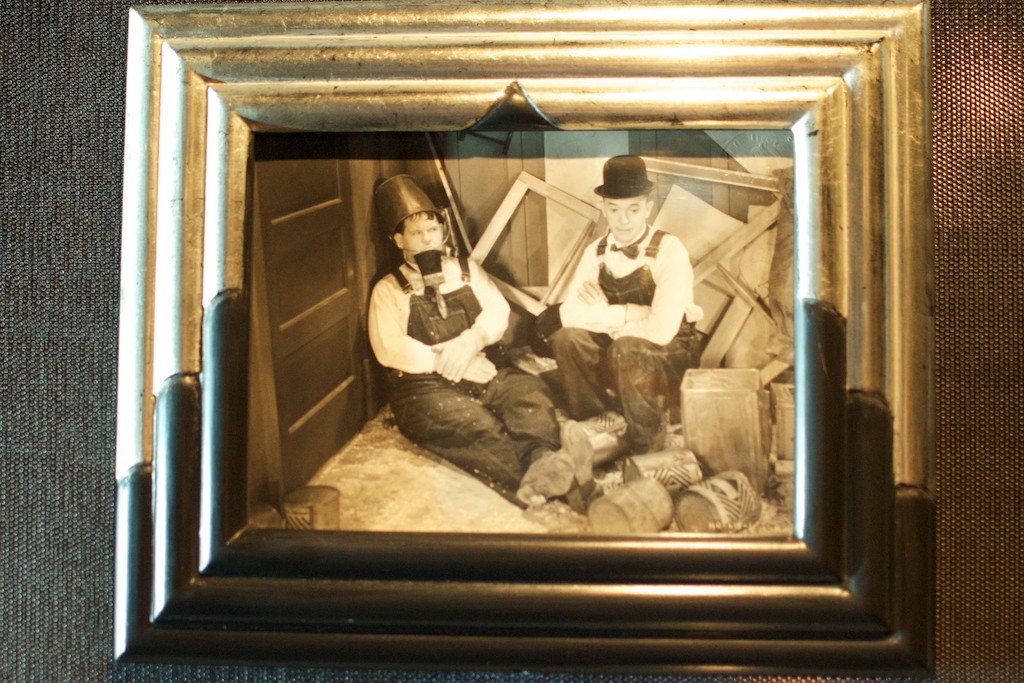
|
|
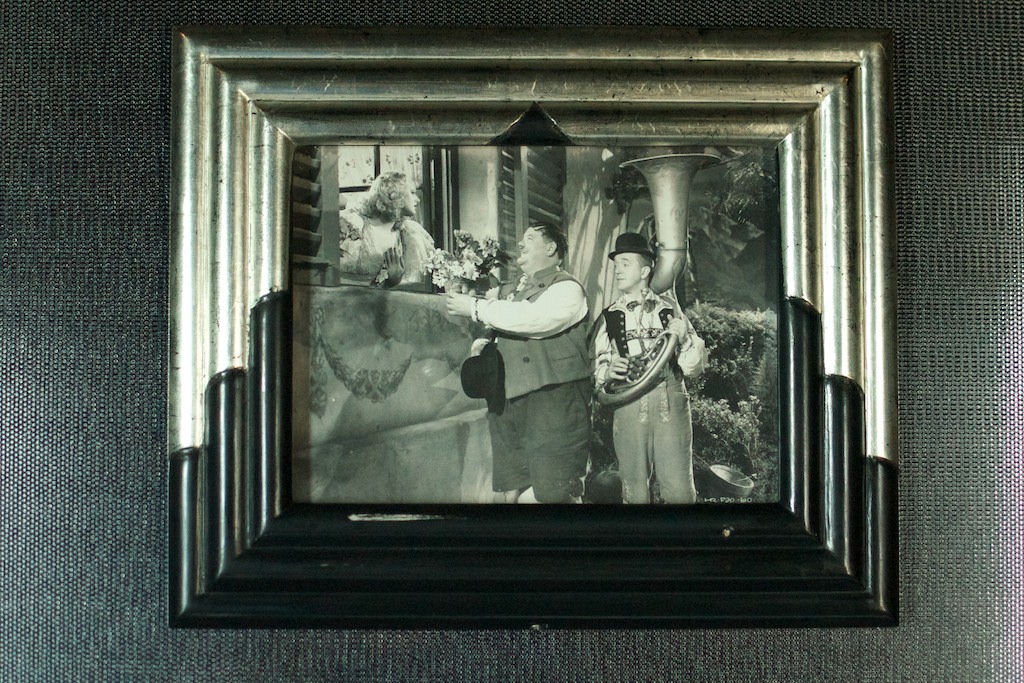
|
|
| This large painted Indian elephant weighs hundreds of pounds and is from Sri Lanka. It is just in front of the Sports Bar on the Lower Prominade deck. |
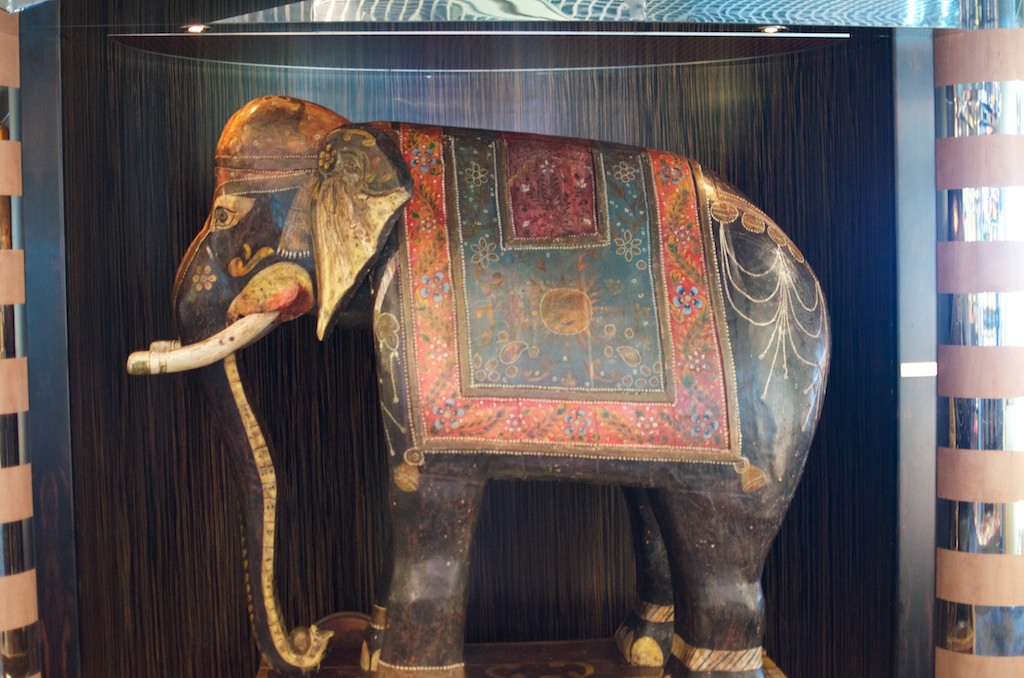
|
| This is a reproduction of the original America's Cup from sailing fame. The reproduction is in the Sports Bar on the Lower Prominade deck. |
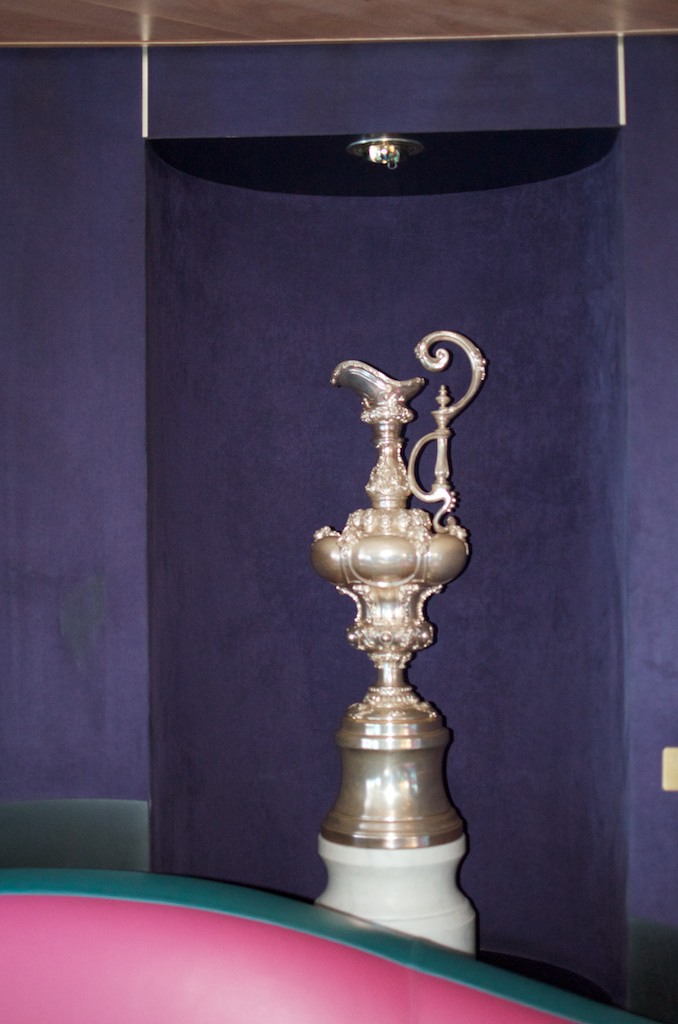
|
|
This is a portrait of one of the Holland America Oosterdam by well-known maritime artist Captain Stephen J. Card. It is one of six paintings of different Holland America ships that hang between decks on the forward stairwell of the ship. Instead of taking the elevator to see each photo, it was a fun walk up from the Lower Prominade deck. The other paintings from Captain Card follow. |

|
| The painting is of the Oosterdyck, a Holland America freighter. |
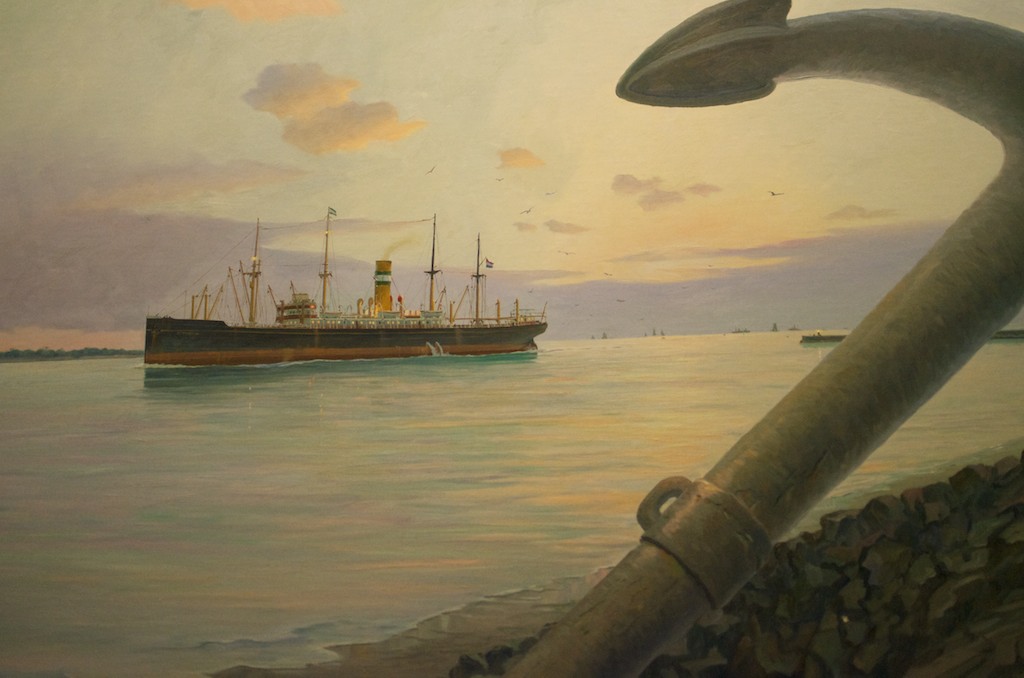
|
| This is a painting of the Leerdam, a Holland America freighter/passenger ship. |

|
| This is a painting of Holland America's New Amsterdam from 1938 in the Panama Canal. |
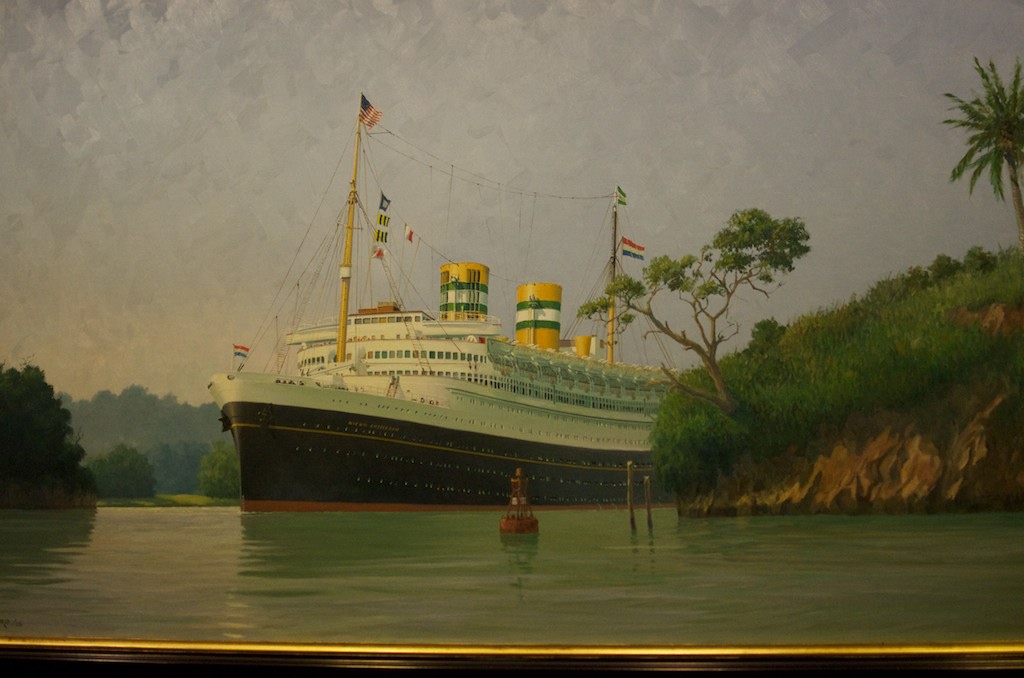
|
| This is the Rotterdam V, the flagship of Holland America from 1958 until 1997. |

|
| This is the Ryndam II in the Suez Canal. |

|
| This painting was on the staircase as I continued up towards the top decks of the ship. It wasn't in the iPod tour, but it is a really interesting example of art that presumably comes from the 18th century. It has a similar flavor to the map of the Western Hemisphere painted in 1788 shown earlier. |
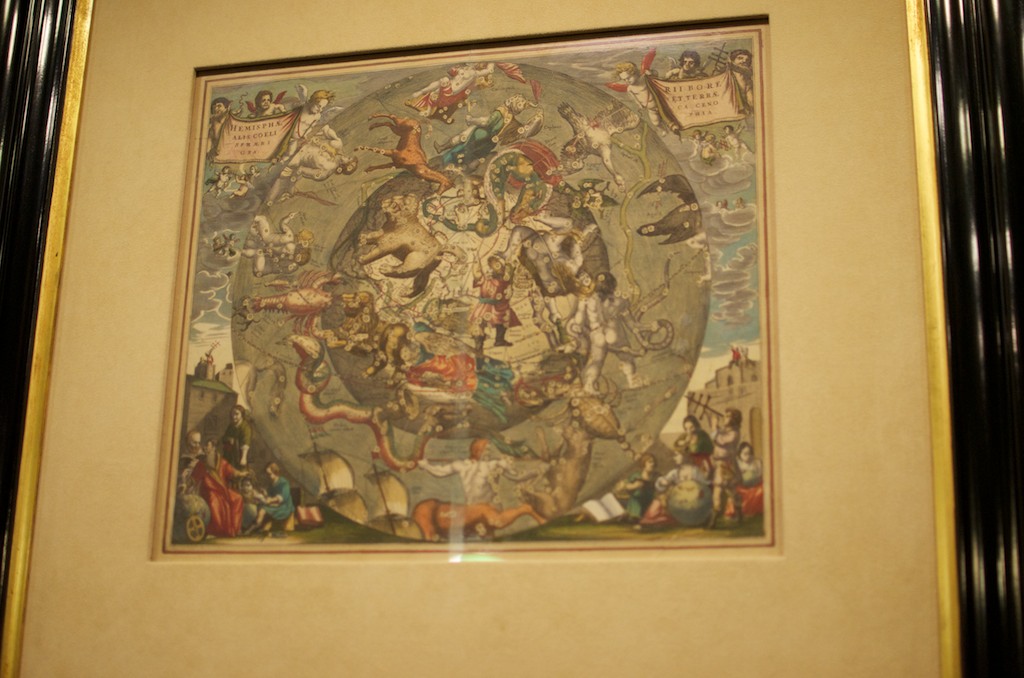
|
| This a bronze sculpture of Henry Hudson on the Prominade deck near the Ocean bar. Hudson, who is credited with discovering Hudson's Bay and other parts of North America's east coast, is special to Holland America because his ship, the Half Moon, is the Holland America's logo. |
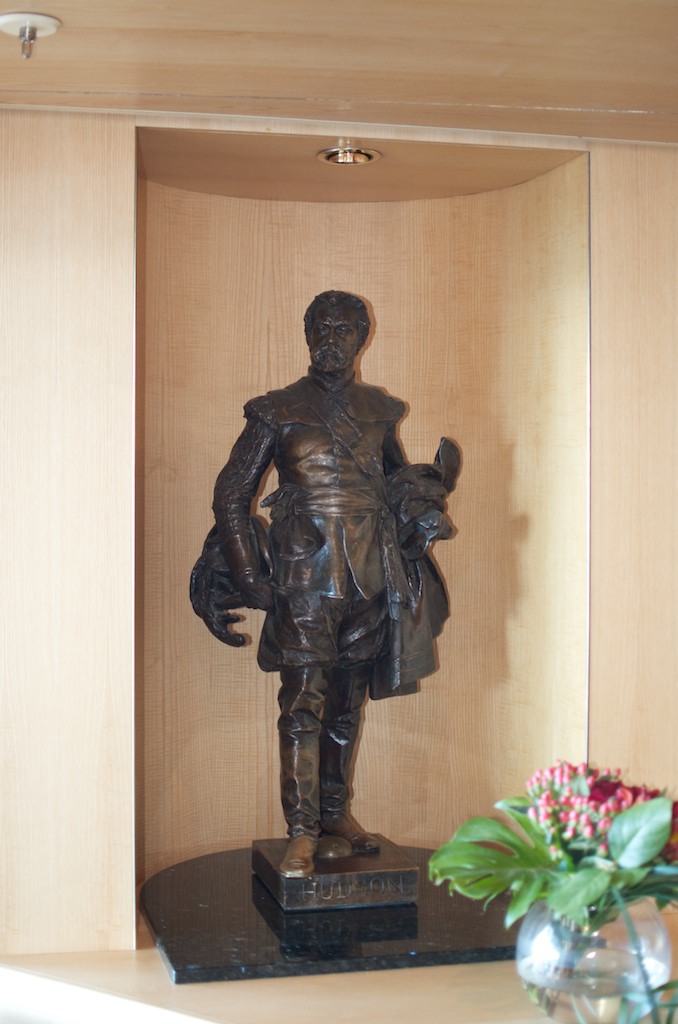
|
|
Here is one more shot of the beautiful Waterford crystal that shows the other side of the globe. It is seven feet in diameter and weighs about three tons. It took Waterford about six months to create the globe. While this ends my photos of portions of the art tour from Holland America, it is by no means a complete tour of all the art and sculptures on the ship, although it certainly gives you a good flavor of the amazing Oosterdam. |

|
| Click here to go to the home page of our trip to Alaska. |